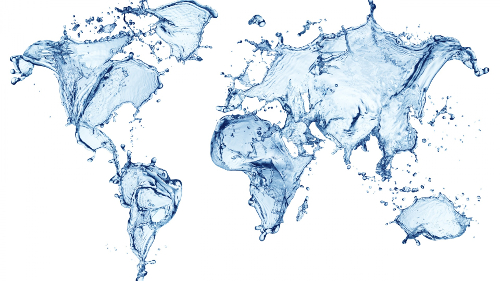Potential market size for uptake
The pollution of water for human consumption is a matter of global importance. Arsenic (As) is a ubiquitous semi metallic element and it is present in the rocks, into the water, in the air and in animals and plants.
Although it is not as abundant in percentage as other rare elements, arsenic is one of the most common and its average content into the rocks of the Earth’s crust has been estimated at 1.5 grams per ton of rock.
In this way, a very wide range of people worldwide is chronically exposed to arsenic through water for human consumption. There are different effects that may result from the assumption of arsenic:
- toxic effects: the toxicity of arsenic differs quantitatively between the form As (III) and As (V), with the first being able to give toxic effects at much lower doses than the second one.The first appearances of arsenic poisoning are visible on the skin, with areas of hyper pigmentation and keratosis, and at the extremities, where the impairment of peripheral vascular disease determines the so-called Blackfoot disease
- carcinogen effects: especially bladder, lung, skin and kidneys cancer
- non-carcinogen effects: like endocrine, cardiovascular and neurological diseases
Arsenic is a water contaminant that is currently widespread in many areas of the Earth.
High arsenic concentrations, well above the limit imposed by the European Union (10 μg/l), have been detected in: the West Bengal region (India), the area around Fairbanks (Alaska), some areas of Taiwan and Mongolia, the Lagunera region (Mexico), the province of Antofagasta (Chile); the region of Obuasi (Ghana); the provinces of Cordoba and Catamarca (Argentina) (Turner, 1967; Sosic, 1973; Harrington et al., 1995; Sancha et al.,1994; Chen et al., 1995; Pearce, 1995).
Particularly alarming is the situation in Bangladesh, where some sources show that the 27% of the groundwater is characterized by an arsenic concentration of 50 μg/l and the 46% by a concentration of more than 10 μg/l.
It is estimated that in Bangladesh there are 11 million wells, serving a population of about 133 million people. Of these, roughly 35 million people drink arsenic contaminated water with concentrations exceeding 50 μg/l and 57 million water with arsenic concentrations above 10 μg/l.
The highest arsenic contamination occurs in aquifers at a depth of 15-30 m. Also in certain European areas, arsenic presence is rather worrying, although this kind of contamination does not affect European aquifers to the same extent that occurs in the areas mentioned above.
Hungary is a case of special interest. It is the sole European Member State who led an official and accurate analysis of arsenic pollution in the water for human consumption. Its results has shown a worrying situation because arsenic concentrations in the order of hundreds of μg/l have been detected. As reported in the document The management of European Funds proposed by the Ministry for the International Trade, the budget available to Hungary for the whole period 2007-2013 is almost 29 billion Euros: of these, 24.5 billions come from Community funds, while the remaining 4.3 billions have been made available by the Hungarian National co-funding. European fundings are and will be assigned in the subsequent way:
- € 12.398 billions from the European Regional Development Fund (ERDF);
- € 8.642 billions from the Cohesion Fund;
- € 3.057 billions from the European Social Fund (ESF).
The potential recipients of these funds are groups of municipalities that would implement environmental projects, including those about water treatment.
Therefore, the Hungarian market can be considered as particularly relevant, especially since a European decree at the end of 2010 blocked the possibility of getting a waiver from the abovementioned arsenic concentration threshold value.



